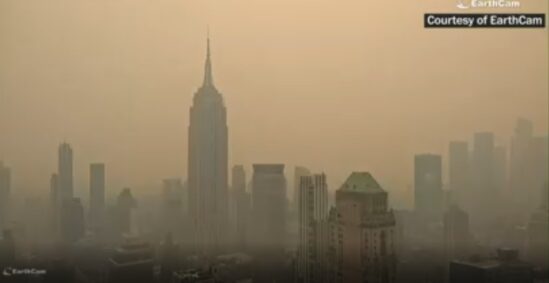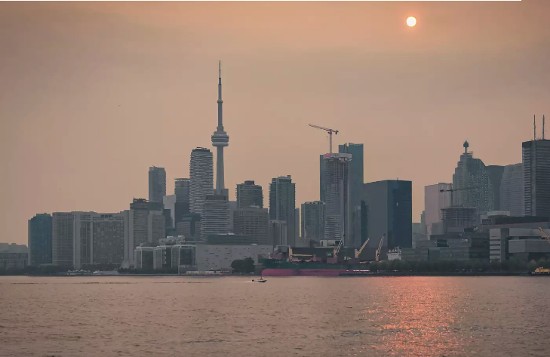My wife and I are moving from Toronto this month to remove ourselves from a city that is changing so quickly that it is hard to recognize from year to year. We have been evicted from our condominium apartment which we have rented for eight years.
What began more than a decade ago as an effort to enjoy living downtown after we sold our suburban home, has turned out not to be our Eden. The city today is congested, noisy, and increasingly showing signs that it is losing its way. Condominium developers are running roughshod over neighbourhoods as provincial oversight interferes with local urban planning. Instead of 15-storey-limited multi-unit residential buildings, Toronto is sprouting Manhattan-style 40 and 50-storey structures.
Green space, fought so hard for, is vanishing. Condos are replacing single-family, semi-detached and row housing. For-rent apartments are being rezoned to allow developers to tear them down, evict tenants, and erect condominiums in their stead. The cost of homes and rent is getting out of reach for an increasing number.
The construction is everywhere with sky cranes dominating the landscape. Noise and dust are everywhere joined with the pollution from increasing street-level traffic. The city’s roads are crumbling under the volume. Public transit is inadequate. New mass transit is delayed and over budget.
So we are escaping to a town called Oakville, about 50 kilometres (31 miles) to the west. But even Oakville, which sits on the shores of Lake Ontario, one of the five Great Lakes of North America, cannot escape the reality of climate change impacts.
Wildfires over this spring are burning the forests of Canada by the thousands of square kilometres. And the smoke from them in this enormous country of ours is seeping into urban areas and casting a pall over the Great Lakes region and even further south to New York City (see EarthCam image below).
 Toronto’s air is yellow-brown. Today, the sun is fighting to get through the smokey layer of pollution hanging above us. In the town of Oakville where we were yesterday, it reeked of wood smoke. It was so pervasive that it crept into our new building halls. The only way to escape the smell was to seal ourselves in our soon-to-be new home while running the air conditioning.
Toronto’s air is yellow-brown. Today, the sun is fighting to get through the smokey layer of pollution hanging above us. In the town of Oakville where we were yesterday, it reeked of wood smoke. It was so pervasive that it crept into our new building halls. The only way to escape the smell was to seal ourselves in our soon-to-be new home while running the air conditioning.
What has this onset of smoke to do with climate change? Everything say climate scientists who have warned of this in their past forecasts.
The condition of Canada’s boreal forest is increasingly being subjected to rising atmospheric temperatures with unabated warming causing soil and forest litter to dry out. Rainfall is less predictable with long periods of drought followed by deluges putting trees under increasing environmental stress. Non-native insects continue to move poleward from temperate latitudes into northern forests bringing with them infestations that lead to massive tree die-offs. The dead trees add to the tinder-dry forest debris and soil to create perfect conditions for wildfires. It’s as if California, which experienced its hellish series of wildfires in recent years, has moved north of the American border into Canada.
Today, while walking outside wearing a mask, something I did only indoors during the COVID-19 pandemic, the air seemed unnaturally cooler than normal. It made me think about those who want to inject aerosols into the atmosphere as a geoengineering experiment to drive the thermometer down. Well, what we are witnessing is nature’s version with megatons of carbon particulate matter and other aerosols filling Canadian skies. Maybe the temperature today felt cooler than normal because the sun couldn’t cut through the yellowish haze to warm temperatures at ground level. Or maybe it’s because a cold front has moved down from the Arctic to temporarily lower local thermostats, but one thing is for sure, some consequences go beyond burned-out forests and tainted air.
The smoke represents an increased risk for asthma in young and old, lung and heart disease, and cancer. Millions are being subjected to anthropogenic climate change coming to us in fiery reds and smoggy yellows. The smoke is even affecting the unborn because the particles are so tiny they can cross the placental barrier.
In the past few weeks as the pandemic alerts were lifted, I had stopped wearing masks of which I have a considerable number still in boxes. Now I’m going back to them, not to protect me when I go into crowded venues, but rather to keep smoke from getting into my lungs. It is hard not to see the irony in the reversal of what may become another new normal for people.
Yesterday, a Toronto Star article headline read, “With wildfire smoke in the forecast for Toronto, is it time to bring back masks?” Air quality statements issued by Environment Canada warned that these conditions are to remain with us for at least this week, and based on long-term predictions of unabated wildfire conditions, become a feature of our existence for the foreseeable future. Today’s Washington Post states that the most vulnerable citizens of New York City are being urged to wear high-quality masks should they venture outside with smoke having reached them and further to the south into South Carolina.









